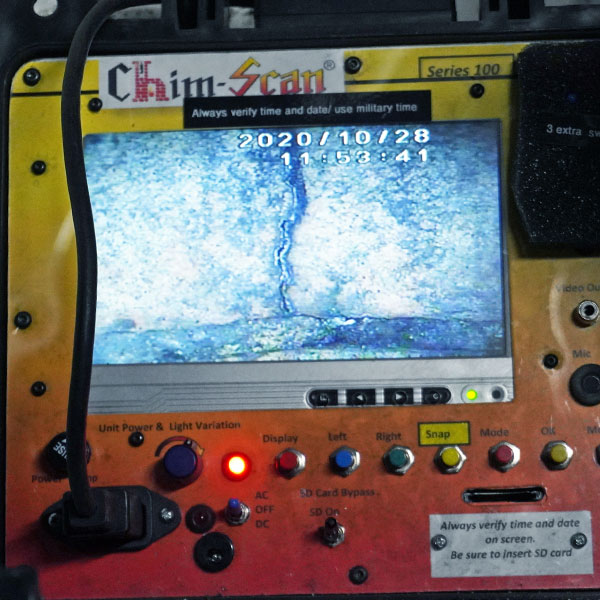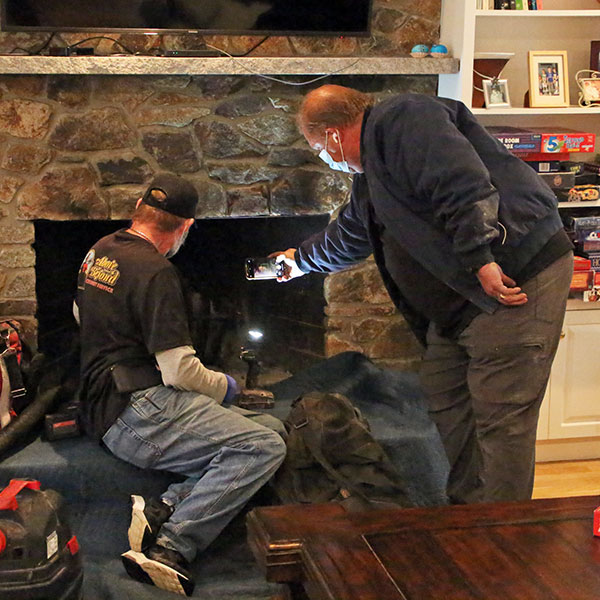Get Chimney Inspections Before Buying a New Home
You found a new home for your family, signed the paperwork, and ordered a home inspection to ensure its major systems are in working order and do not require costly repairs. However, when buying a home with a solid or liquid fuel heating appliance like a fireplace or heating stove, many homebuyers don’t realize they also need a chimney inspection before closing on a new home.
 Without hiring a Certified Chimney Sweep® to conduct a chimney inspection, homebuyers cannot confirm whether the chimney and fireplace are safe to operate. That’s why the National Fire Protection Association (NFPA) requires a Level 2 chimney inspection upon the sale or transfer of real estate. A standard real estate inspection does not include the required NFPA Level 2 inspection of the chimney, vents, and attached heating appliances. Unlike a Certified Chimney Sweep®, most real estate inspectors do not have the training or expertise to properly perform a detailed chimney and fireplace assessment.
Without hiring a Certified Chimney Sweep® to conduct a chimney inspection, homebuyers cannot confirm whether the chimney and fireplace are safe to operate. That’s why the National Fire Protection Association (NFPA) requires a Level 2 chimney inspection upon the sale or transfer of real estate. A standard real estate inspection does not include the required NFPA Level 2 inspection of the chimney, vents, and attached heating appliances. Unlike a Certified Chimney Sweep®, most real estate inspectors do not have the training or expertise to properly perform a detailed chimney and fireplace assessment.
NFPA Level 2 Chimney Inspection
A level 2 chimney inspection is a detailed interior and exterior visual examination of all readily accessible areas of the entire chimney system, including vents, attached heating appliances, and connections. The chimney inspector will also conduct a video scan of the flue and flue liner to determine if any repairs or replacements are necessary. The inspection will also verify that heating appliances are correctly installed.
Chimney Fire and Carbon Monoxide Exposure
During a chimney inspection, the inspector will also check for creosote deposits and obstructions. Without routine cleaning, creosote can accumulate in the chimney. Creosote is a combustible substance that increases the risk of fire and carbon monoxide exposure. Many homeowners are unaware they had a chimney fire until it was uncovered during a chimney inspection. Even a small chimney fire can damage the masonry and flue liner. It also increases the risk of fire spreading to nearby combustible materials. In addition, water leaking in the chimney due to masonry damage or other issues can damage the interior masonry and components, compromising the chimney’s structural integrity.
 Chimney Assessment
Chimney Assessment
After the chimney inspection, the chimney sweep will provide a detailed assessment of the chimney and fireplace, along with any repairs or replacements necessary to ensure the chimney and attached heating appliances are structurally sound and safe to operate. Homebuyers can use the chimney inspection report to negotiate with the seller to complete any repairs or modifications before closing or deduct the cost of chimney repairs from the sale price.
Annual Chimney Inspections
Once you have moved into your new home and completed any necessary chimney repairs, don’t forget to schedule a Level 1 chimney inspection once a year. A level 1 is a basic visual inspection required to ensure your fireplace and chimney remain structurally sound and safe to operate. Annual chimney inspections are the key to minimizing repairs and prolonging the life of the chimney system. Your chimney sweep will also let you know if chimney cleaning is necessary to remove any combustible deposits and flue obstructions.
